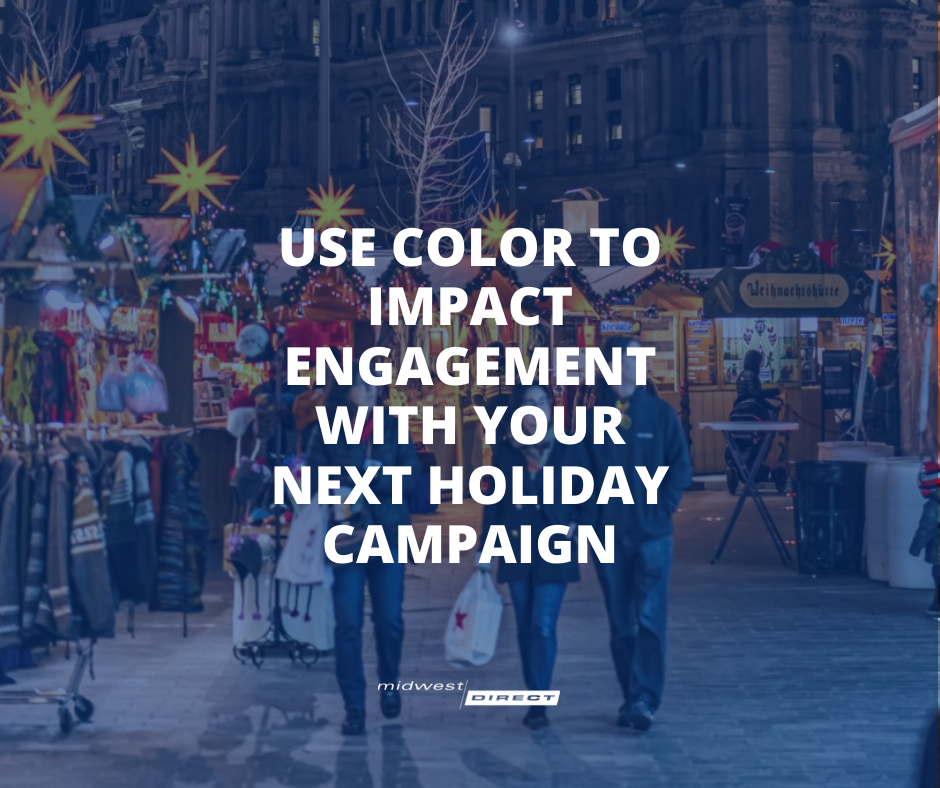Around the holidays, marketers have to strategize on how to stand out and use festive marketing tactics to influence consumers. Let’s take Starbucks as an example. Everyone is familiar with Starbucks' green and white coffee cups and how they change the colors of their cups during the holidays. Their bright red cups signify the arrival of their holiday drinks, such as the gingerbread latte and peppermint mocha. This tactic, changing packaging to fit holiday colors, gets consumers into the holiday spirit by convincing them to buy their holiday-themed product. So how does something as simple as changing the color of a coffee cup end up with more purchases during the holiday season? This is because color has psychological effects on the human brain and behavior. Here’s what you need to know to make sure you can take full advantage of color when marketing.
What is Color Theory?
Color theory is the study of how color impacts perceptions and behaviors. It impacts how we think, behave, and interpret information. In direct mail or digital advertising campaigns, the colors portrayed on your mailpieces can affect whether or not consumers are persuaded to consider your company. This is why it's essential to understand how different colors affect the human brain. During the holiday season, paying attention to the colors used in your advertising and making them feel "festive enough" could impact your consumers' buying decisions.
Christmas Color Theory
When you think of the holidays, what colors come to mind? Red, white, and green? Blue and gold? These are the most commonly used colors during the holiday season, and there is a reason. These festive colors can evoke emotions from consumers by drawing them to colors they might not naturally be drawn to outside of the holiday season. It's important to understand that color theory is moderately subjective. Previous experiences, cultures, genders, ages, and memories can affect how we react to colors. However, while not everyone will respond to colors, in the same way, there are a few generalities about how people respond to specific colors.
Red
The color red is often associated with fire, danger, violence, and warfare. However, it can also be associated with love, passion, importance, and hunger. Studies show that the color red can raise blood pressure and respiration rates and enhance human metabolism. Red can be a powerful accent color but has an overwhelming effect if used too much in design. During the holiday season, red is closely associated with berries, fire, and Santa which leads to those feelings of warmth, love, and hunger.
Green
The color green often represents new beginnings, wealth, growth, nature, renewal, and abundance. It can also represent envy, jealousy, or a lack of experience. Green has both the calming attributes of blue and the energy of yellow. Green is known to have a balancing and harmonizing effect in design. Around the holidays, green is used to represent Christmas trees and mistletoe and is often used alongside the color red to balance the power that comes with red.
Blue
The color blue is often associated with sadness, calmness, and responsibility. It can also be associated with reliability, peace, and religion. The effect blue has on the mind is widely affected depending on the exact shade and hue. Light blues are seen as relaxed and calming, whereas dark blues are seen as reliable and strong. Blue often represents royalty and calmness during the holiday season and is used for celebrating many holidays since it is also a symbol of peace and religion. We love using our “Midwest Blue” in all our designs!
Gold
The color gold represents success, achievement, and triumph. It can also be associated with abundance, luxury, sophistication, value, and elegance. However, if gold is overused in design, it could be seen as egotistical and proud. This is why gold is often used as an accent color. Around the holidays, gold represents prosperity and gifts. We use it in our designs all-year-round!
White
The color white is on the opposite end of the spectrum from black, but it can work well with almost any color. It is often associated with purity, cleanliness, and virtue. White can be a perfect color to use in design as a neutral backdrop for the other colors to be front and center. It also helps to convey cleanliness and simplicity and is popular in minimalist designs. Around the holidays, white represents snow. Speaking of snow, please don’t let it snow before the holidays! (Sincerely, your fellow Ohioans.)
If you have concerns or questions about your holiday marketing campaign and how you can enhance your efforts, our Strategic Marketing Team may be able to help. Contact us to learn more.
